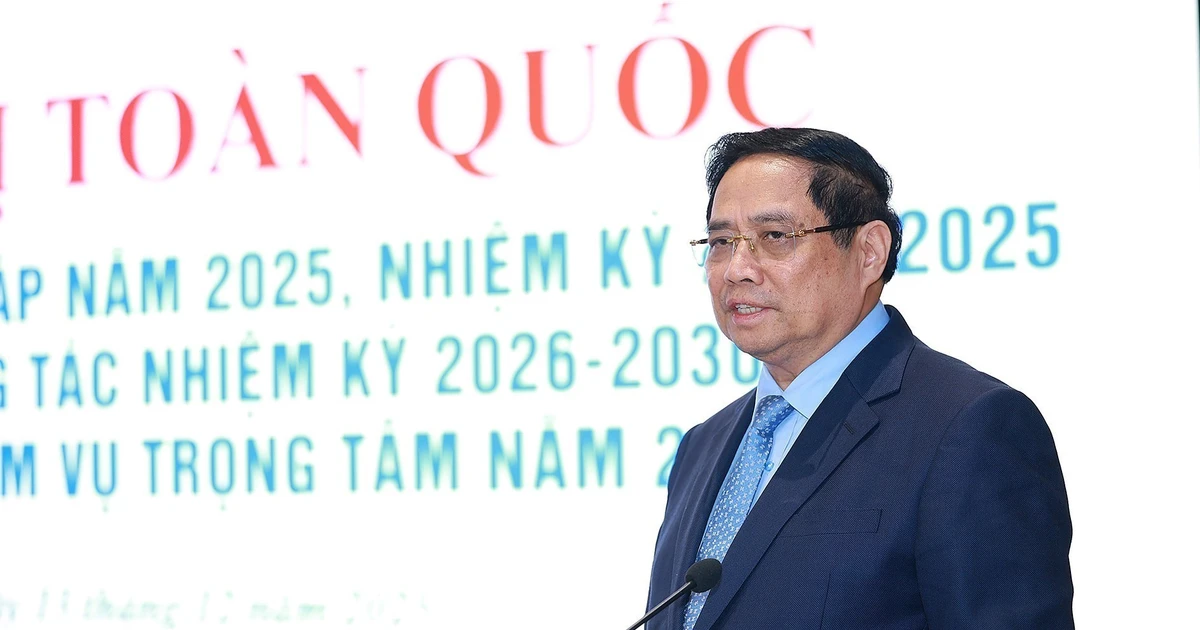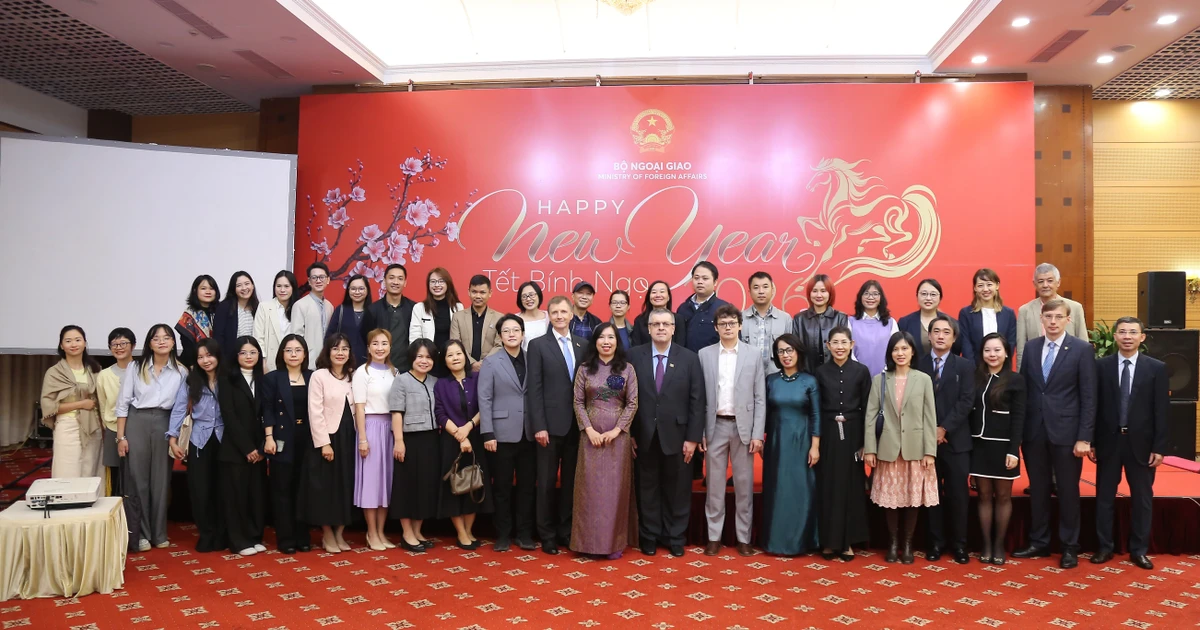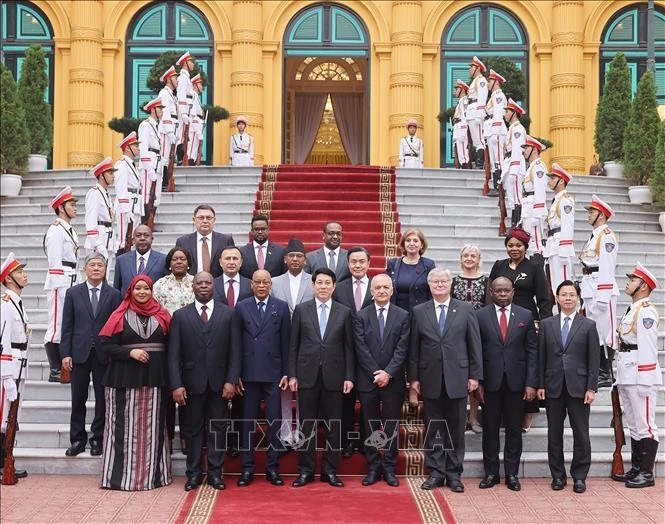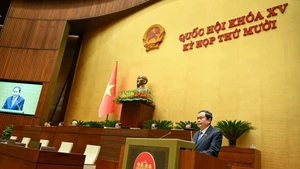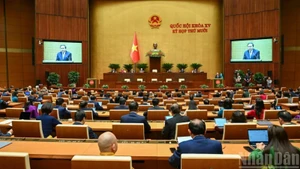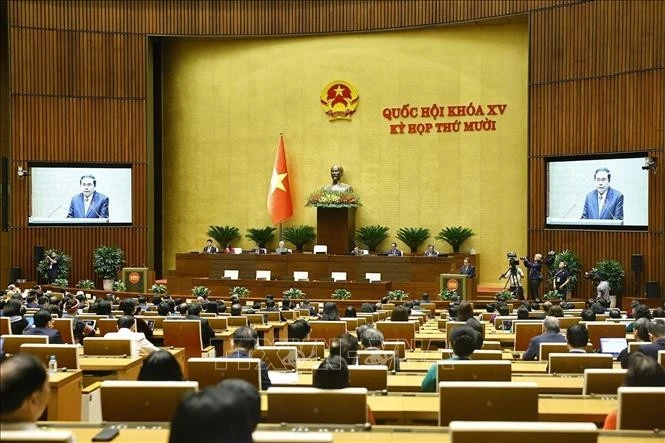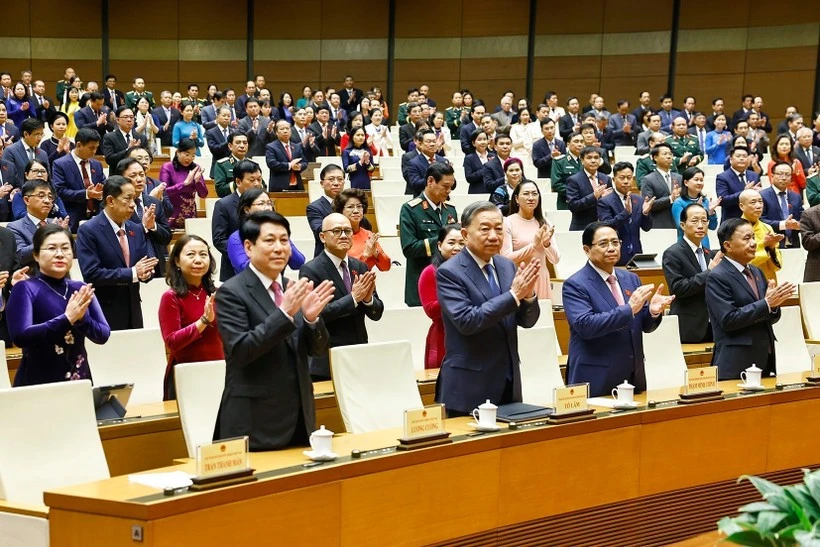The plan reflects a sense of urgency and determination, with a clearly defined two-phase roadmap, specific tasks, and assigned responsibilities for each level and sector.
Comprehensive digital transformation post-restructuring
During the ongoing ninth session, the National Assembly approved several significant resolutions, including amendments to the 2013 Constitution, the revised Law on Organisation of Local Government, and the Resolution on reorganising provincial-level administrative units.
These are historic decisions aimed not only at streamlining the administrative apparatus and improving public service quality but also at opening new development horizons and fostering rapid, sustainable national progress.
However, the challenge lies in ensuring that the newly streamlined apparatus operates effectively and seamlessly from July 1, 2025. In this context, digital transformation has been identified as a breakthrough tool enabling the complete reorganisation of the administrative system based on digitisation, digital data, and digital interaction.
Plan No. 02-KH/BCDTW, issued in a timely manner, is not merely a technical solution but a comprehensive political and administrative reform strategy requiring unified, consistent, and resolute mobilisation across the entire political system.
The plan underscores that digital transformation must not be approached as merely adding new equipment or software to old processes. It necessitates a shift in mindset, work organisation methods, and operational mechanisms — with citizens and businesses placed at the heart of the process, and their satisfaction serving as a primary measure of success.
Implementation divided into two phases
The urgent phase, until June 30, 2025, focuses on immediately addressing institutional, infrastructure, and data bottlenecks to ensure that the two-tier local government system operates smoothly, continuously, and effectively from July 1, 2025. It aims to prevent any disruption or blockage in administrative procedures that could affect citizens and businesses.
The breakthrough phase, until December 31, 2025, aims to fundamentally resolve longstanding weaknesses in digital transformation across the political system. It seeks to complete shared platforms, standardise and connect key databases, and genuinely enhance the quality of online public services — laying a solid foundation for the next phase of development.
The plan sets out specific goals for each phase. Notably, from July 1 to the end of 2025, all eligible administrative procedures are to be centrally provided through the National Public Service Portal. This unified, nationwide approach will gradually replace fragmented provincial-level online services. Targets include the effective delivery of 25 fully online services already integrated into the national portal; provision of 982 online services with a minimum of 1,000 cases per year per service per province; and digitisation of 1,139 administrative procedures to replace document requirements with data — reducing paperwork and costs.
Three breakthrough solutions with guiding impact
To realise the outlined objectives, the plan identifies three guiding breakthrough solutions that run through the entire implementation process, ensuring digital transformation within the political system is consistent, effective, and sustainable.
These include unifying the digital experience for citizens and businesses through a dual-component interaction model: VNeID as the “digital key” for identification, authentication, issuing electronic documents, and receiving official notifications from authorities; and the National Public Service Portal as the “single digital window” for all administrative procedures. A key component is the development of an interactive electronic declaration platform on the national portal to reuse data and minimise documentation requirements.
Another solution is modernising the political system’s command and management methods based on digital data and on-site monitoring capabilities, while simultaneously building transparent digital platforms for citizens, businesses, and organisations to effectively exercise oversight and feedback rights.
The third breakthrough is developing an integrated digital document system for Party-Government-Front bodies, establishing a unified, secure, and seamless platform for sending and receiving electronic documents (including classified documents) across all political institutions.
The plan also outlines specific task groups based on six pillars: institutions, technical infrastructure, data, platforms, human resources, and finance — totalling 67 tasks across two phases.
It defines a streamlined architectural model focused on the core functions of digital government, operating on the principle of “One unified system – One single data source – One seamless service.” Here, the Central Steering Committee acts as the overall commander.
The Government and Ministries are responsible for setting standards and regulations, overseeing national data governance, and implementation. Provincial steering committees are fully responsible for local execution. The commune level acts as the front-line executor, ensuring continuous public service delivery and generating new data that is “accurate – complete – clean – live – consistent – shared” starting from July 1, 2025.
Importantly, all interactions between citizens and the administrative system will occur through a single gateway: the National Public Service Portal and the VNeID app.
The plan mandates that the entire political system must act with urgency, determination, coordination, and produce tangible outcomes on a clear timeline. Each task is tied to the responsibility of its lead, with real impact and public satisfaction as key performance indicators. Implementation must avoid superficiality and fragmentation, ensuring seamless integration across all levels and sectors. Information security and safety are considered prerequisite conditions that must be rigorously controlled and strictly enforced.
Plan No. 02-KH/BCDTW represents a timely and strategic move to concretise the organisational restructuring of the administrative apparatus, linked with a transformation in its operational approach during the digital era. The overarching goal is not merely to ensure seamless, synchronised functioning across the political system, but to build a modern, effective, and efficient model of national governance — with citizens and businesses truly at the centre of all public service activities.



